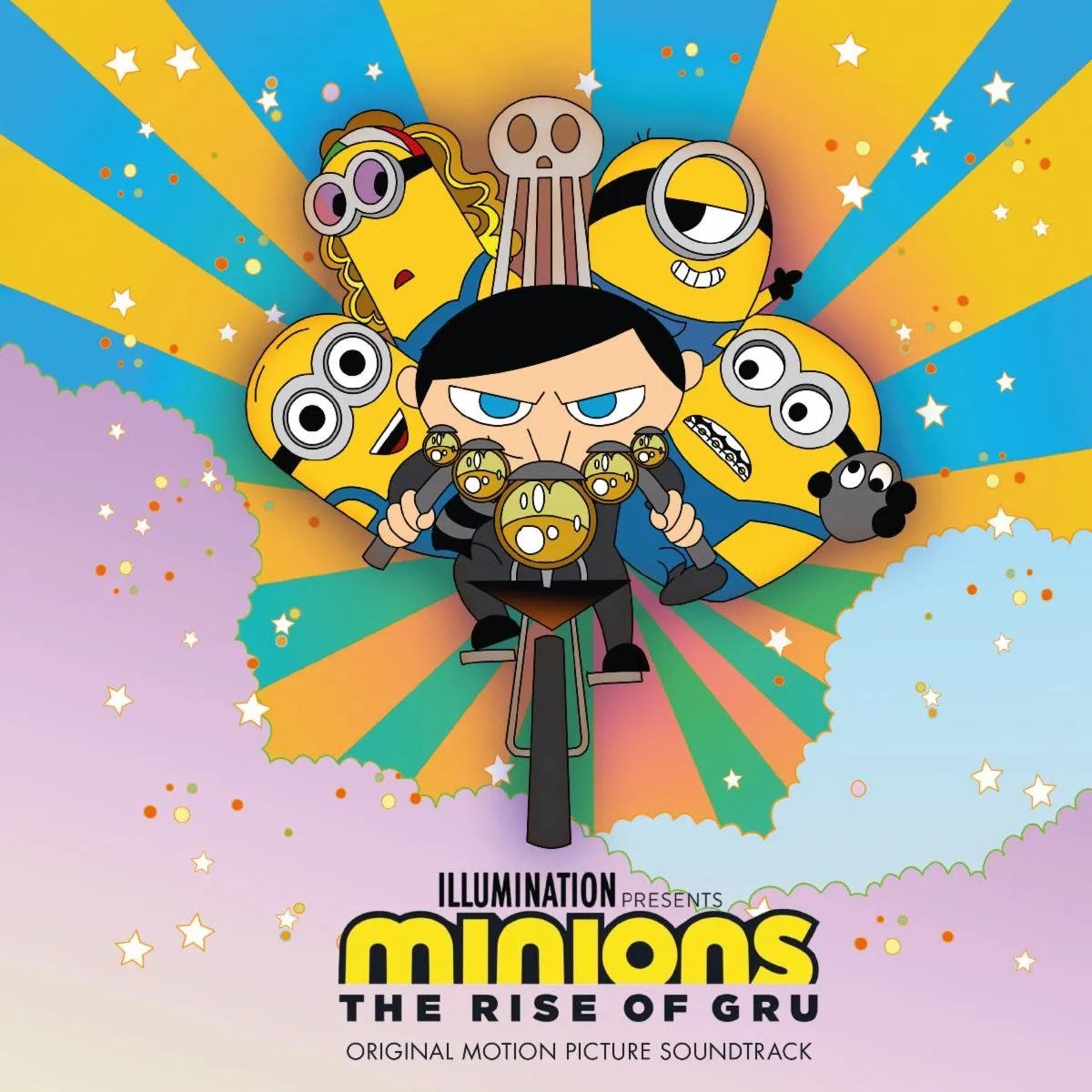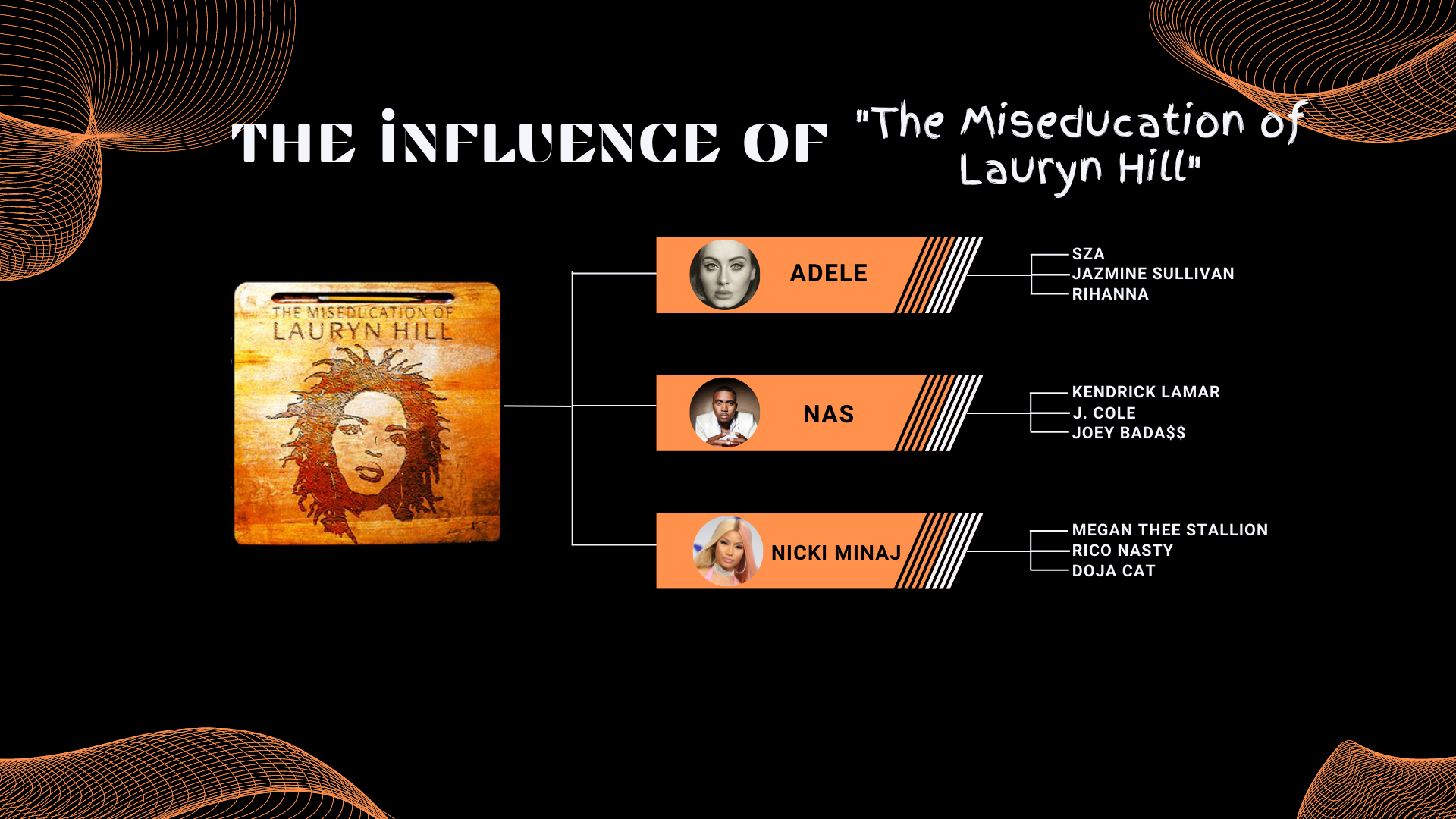Despite Notable Cast, The “Minions” Soundtrack is GRUesomely Underwhelming
For the past 12 years, Gru and his minions have had a chokehold on nearly all aspects of American media. Starting with “Despicable Me,” a movie centered around the protagonist-villain, Gru, and his relationship with three foster children while they attempt to steal the moon, the minions have slowly but surely stolen the show for themselves. From memes to clothing items, the minions have created a brand name for themselves, becoming more popular than Gru himself.
Prior to the release of “Minions: The Rise of Gru,” pop culture had a field day with hundreds of minion-themed memes. Jokes about attending the premiere in full suits as “gentleminions” led to teens actually doing so, disrupting the movie targeted at children ages 11 or younger and their parents by yelling Minion gibberish at the screen throughout the film.
With a children’s movie centering around the quest for villain hood amid bright and happy cinematography, there are a lot of themes that require attending to on behalf of the creators to pull off such a film. As with every movie, the soundtrack plays a key role in holding all of this unexpected chaos together.
This time around, Illumination Entertainment brought in Jack Antonoff to handle the album’s production, creating a soundtrack that acts more as a pop hits cover album than an original.
This album is so similar to the previous soundtracks that it would be hard to distinguish if not for the names who litter the track. From Thundercat to St. Vincent, it’s the way these big names remake the tracks that makes this album special.
Produced almost exclusively by Antonoff with help from RZA, Heitor Pereira, St. Vincent, and Ex Reyes, the soundtrack covers 70s era funk, pop, and soul hits in a fresh manner. In an exclusive interview with Billboard, Antonoff explained that the idea was “to take modern artists that are really in some way in the tradition of the great music of that time and then record them with this half modern technique, half super analog technique. Animation in kids’ movies is pretty trippy, so you can f–king get away with a lot.”’
You can hear it in the soundtrack — this album is a psychedelic trip. Every song sounds like an acid-dipped version of its original, invoking visuals of bright flowers and roller rinks and ringing 70s imagery loud through the mind, even for someone who hasn’t yet seen the movie (me).
It’s no surprise Antonoff could tackle such a project. With his history of working with Lana Del Rey (with whom he created “Norman F—cking Rockwell”), Taylor Swift, P!nk, Lorde, and more, Antonoff has what it takes to recreate older hits of the same genre he does so well. According to Billboard, his goal is that the soundtrack introduces these songs to the new generation, but feels their place in history is solid enough to last on their own.
“I think there’s certain songs that live in the moment and then certain songs that kind of live forever,” he says. “I think the songs that I chose, regardless of this project, live forever. So this can just be another point in the long story of all the songs which are going to go way into the future of mankind.”
“Turn Up The Sunshine” is the lone original on the album, bringing disco to the modern era with deep bass from Tame Impala and Diana Ross’s iconic voice. The song broke onto Billboard’s Adult Contemporary chart, landing at No. 21 and making it Ross’s first hit on any Billboard chart since 2006. “Turn Up The Sunshine” is the exact song I would expect to come from the Minions soundtrack — interpret that however you like.
Brittany Howard’s “Shining Star” and BROCKHAMPTON’s “Hollywood Swinging” both handled the original versions with respect, balancing their own artistic styles with the original. Unfortunately, the track they sandwich, “Funky Town” by St. Vincent, is horrible. The autotune takes away from the vocals that make the original so iconic and instead hurts the ears, making this song the lone instant-skip on the soundtrack.
Kali Uchis beautifully remakes João Gilberto’s “Desafinado”, but the translation of the song to English makes it harder to find the resemblance. The 70s-eque remix of a bossa nova classic doesn’t translate too well in terms of instrumentals, but Uchis’s voice carries the song in a beautiful way.
Polachek’s cover of “Bang Bang” is hauntingly beautiful, using the western theme to her advantage and vocally bodying the track. Thundercat’s “Fly Like An Eagle” puts his skills as a bassist at the helm, using his trippy vocals to make it feel like a Thundercat original.
Phoebe Bridgers’s cover of “Goodbye To Love” and Weyes Blood’s “You’re No Good” show their power as vocalists. “Vehicle” nails the Despicable Me vibe, with Gary Clark Jr. doing an excellent job of holding his voice above the instrumentals without overpowering them, giving the whole song a balance that lacks throughout the album.
The second half of the album doesn’t stand out like the first half does. Tierra Whack’s “Black Woman Magic” was something I never thought I’d hear but have always unknowingly wanted, but the autotune felt strange over Santana’s guitar. “Cecilia” is a celebratory Minion song, making it quite annoying as the Minions are bad vocalists. However, the jazz solo is surprisingly enjoyable and I found myself tapping along throughout.
While the soundtrack can feel like it is trying too hard to do something it can’t, every single song is easily identifiable as a Minions-esque song, which is really all that a soundtrack is meant to have. The “Minions: The Rise of Gru” soundtrack will carry these songs into the new generation, for better or for worse. I can only hope they find the originals.
favorite tracks:
Bang Bang - Caroline Polacheck
You’re No Good - Weyes Blood
Vehicle - Gary Clark Jr.
Sydney Fluker is a staff writer.
Thanks for reading! Make sure to follow us on Instagram to stay up-to-date on everything hip-hop.






















